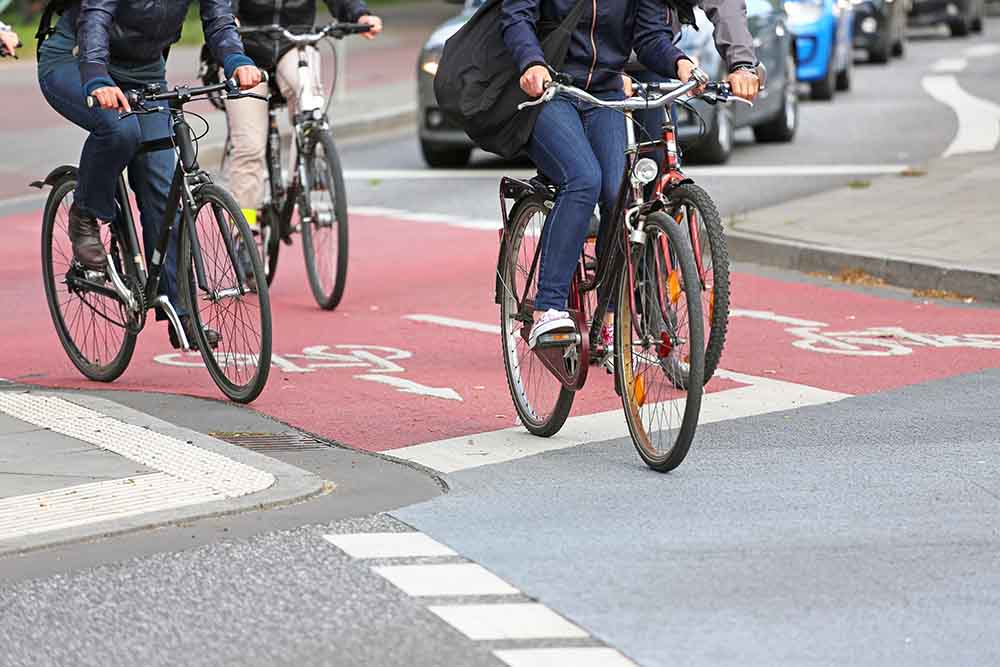
To effectively reduce greenhouse gas emissions at the municipal level, a comprehensive decarbonization pathways are needed. It constitutes an important pillar of sustainable urban development. Key measures include the expansion of renewable energy, energy-efficient renovation of public and private buildings, climate-friendly mobility, urban greening, and a functioning circular economy. Developing a municipal climate protection plan with an assessment of energy consumption and emissions provides a data-based foundation on which goals, priorities, and concrete measures can be defined. Clear responsibilities within the administration, reliable budget planning, as well as monitoring and evaluation, are essential prerequisites for ensuring that the strategy has a lasting impact and can adapt to new challenges.
Definition of sustainable urban development
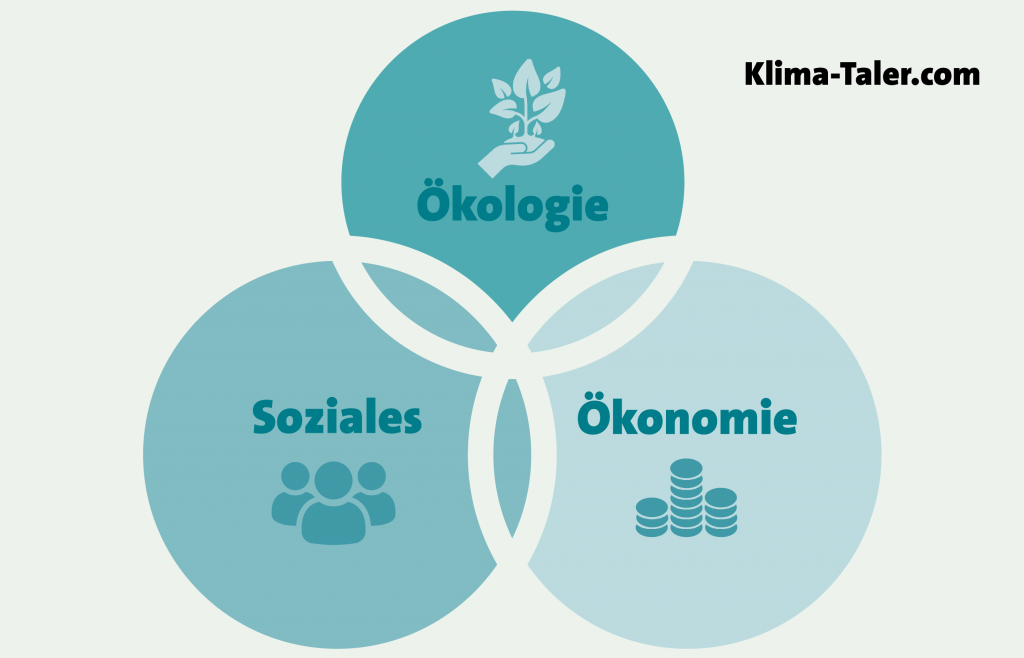
Sustainable urban development takes into account both the present and the future, with particular attention to aspects of climate protection. Those who follow this planning and development approach aim to make urban areas livable, economically viable, and environmentally responsible in the long term.
Cities that adhere to this guiding principle prioritize renewable resources, minimize waste and pollution, and strive to create healthy, livable communities for all. This naturally also includes social aspects. A sustainable city promotes equality, inclusion, and the quality of life for all its residents, regardless of their socio-economic status.
The key areas of action for sustainable urban development
Developing a decarbonization strategy
Effectively reducing greenhouse gas emissions at the municipal level requires effective local decarbonization pathways. This strategy constitutes an important pillar of sustainable urban planning. Key measures include the expansion of renewable energy, energy-efficient renovation of public and private buildings, climate-friendly mobility, urban greening, and a functioning circular economy. Developing a municipal climate protection plan, including an assessment of energy consumption and emissions, provides a data-driven foundation on which goals, priorities, and concrete measures can be defined. Clear responsibilities within the administration, reliable budget planning, as well as monitoring and evaluation, are essential prerequisites for ensuring that the strategy has a lasting impact and can adapt to new challenges.
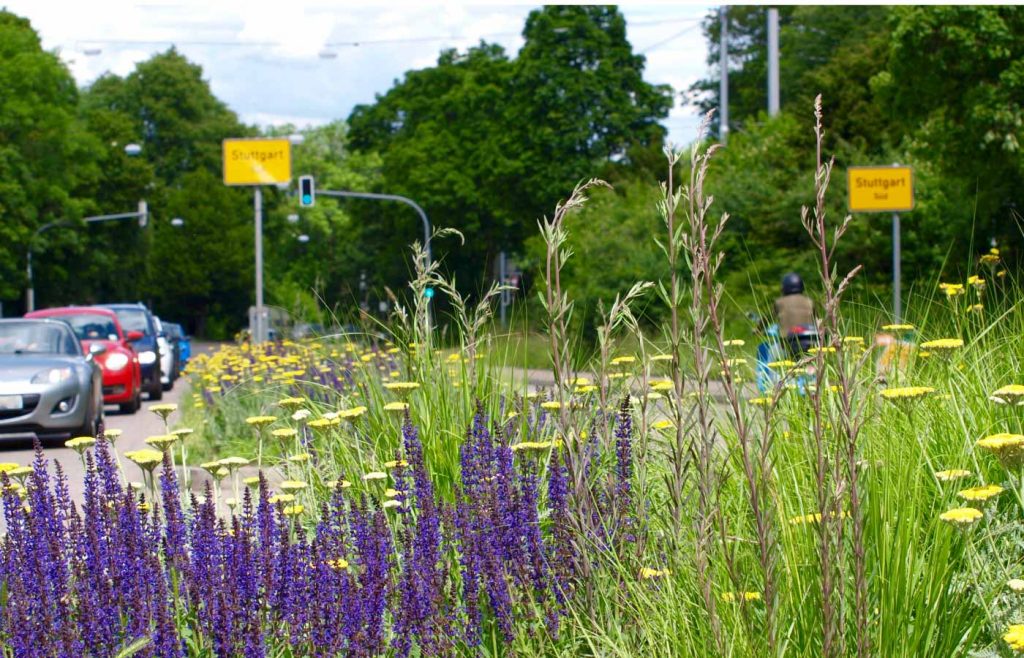
People at the Center of Sustainable Urban Development
The concept of the Doughnut Economy, developed by the British economist Kate Raworth, is gaining increasing importance for the sustainable ciy. It describes an economic approach that balances social justice with ecological stability. The model is represented in the form of a doughnut: the inner ring marks the social foundation, i.e., the minimum conditions for a good and dignified life, while the outer ring represents the ecological boundaries of the Earth, which must not be exceeded. The space between these two rings defines the area in which sustainable development is possible.
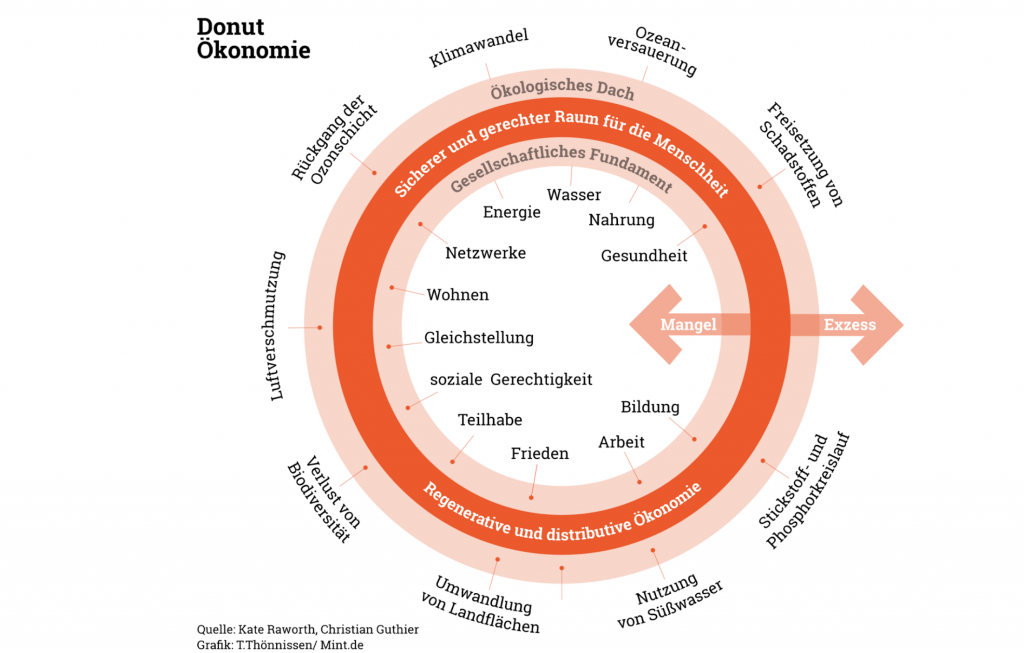
Environmentally Friendly Infrastructure
These overarching concepts place the focus on the sustainability of urban development. Sustainable infrastructure primarily means conserving resources and ensuring the longevity of buildings, in order to avoid material waste and reduce long-term costs. A consistent circular economy ensures that construction materials can be reused or recycled rather than generating waste. Climate-neutral planning and construction are central to minimizing the CO2 footprint of new buildings and renovations and supporting climate protection goals. Energy efficiency plays a key role by designing buildings and public facilities in a way that reduces energy consumption throughout their entire lifecycle.
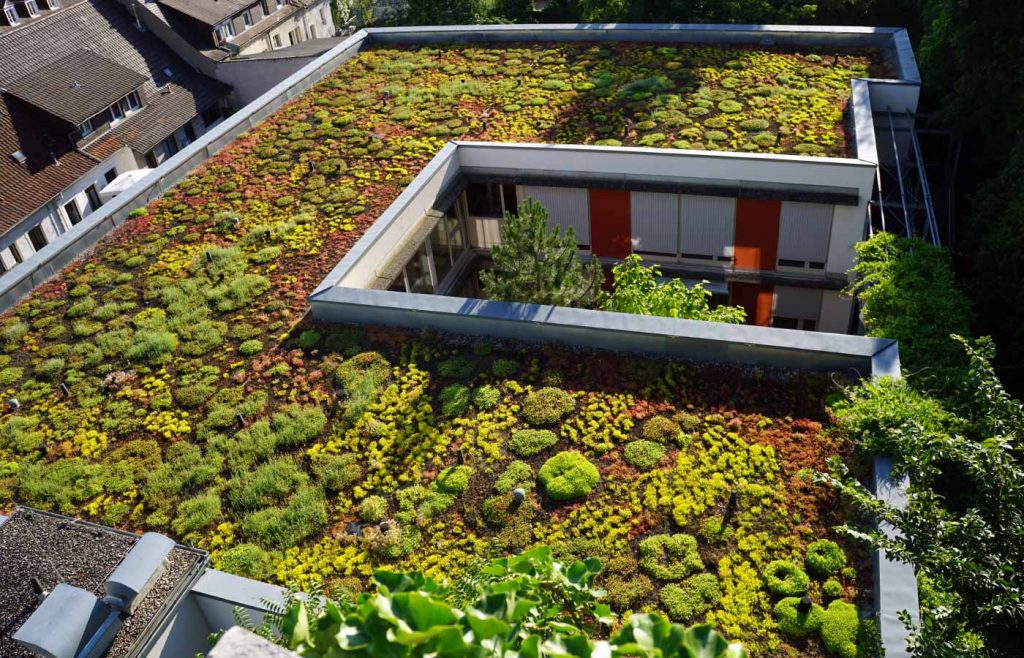
Green infrastructure, such as parks, tree lines, or green roofs, additionally contributes to air purification, heat protection, and the improvement of the urban climate. Blue infrastructure, such as ponds, waterways, or rainwater retention basins, supports water management and protects against flooding. The combination of these elements creates a resilient, future-ready urban space that integrates ecological, economic, and social benefits. Sustainable infrastructure is therefore not just a technical concept, but an integral part of vibrant and healthy cities.
Focus on Public Transportation
An attractive public transportation system is central to sustainable urban development, as it reduces individual car traffic, thereby lowering emissions and congestion. In addition, safe and well-developed bike lanes and bicycle parking facilities make it easier for citizens to switch to climate-friendly mobility. The integration of public transport, cycling, and pedestrian routes creates short, efficient connections and enhances the quality of life in urban neighborhoods, for example through car-free city centers. Digital services, such as real-time information or mobility apps, further facilitate the shift to sustainable transport options. Overall, these measures help make cities more resilient, climate-friendly, and livable.
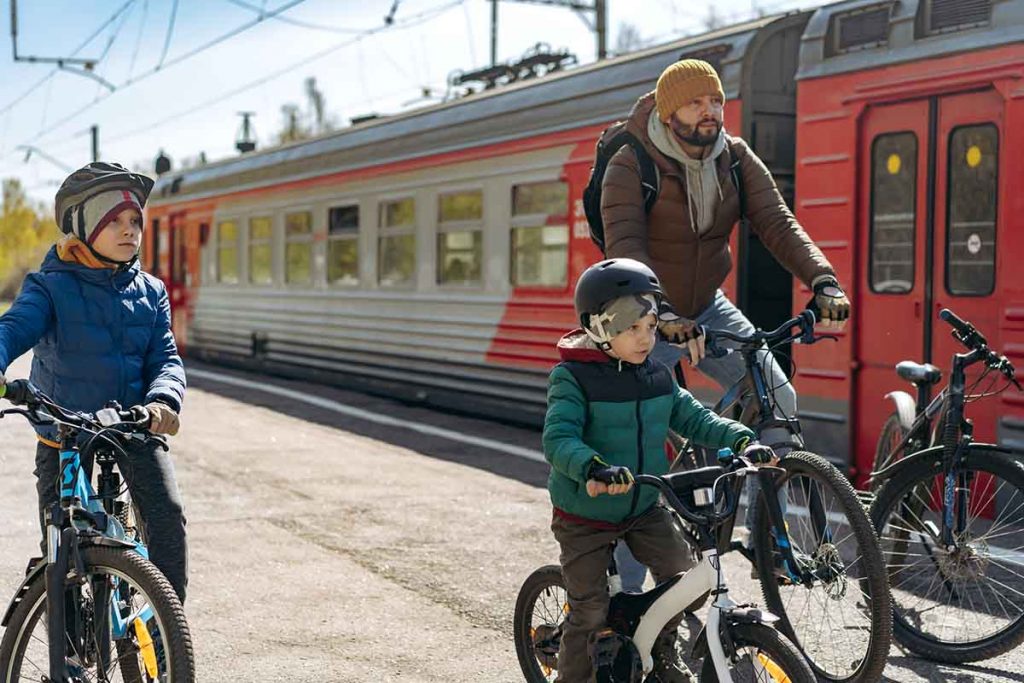
With digital tools like the Klima-Taler app, municipalities can implement sustainable urban development in a measurable and transparent way. The app collects anonymized mobility data, visualizes progress in CO₂ reduction, and makes achievements understandable for citizens. At the same time, the Klima-Taler app provides playful incentives to encourage sustainable behavior in everyday life, for example through challenges or reward systems. This actively involves everyone in the transformation of their city, allowing them to directly contribute to climate-friendly mobility, energy savings, and resource conservation. Overall, the app facilitates the planning, management, and communication of measures and strengthens participation planning sustainable cities.
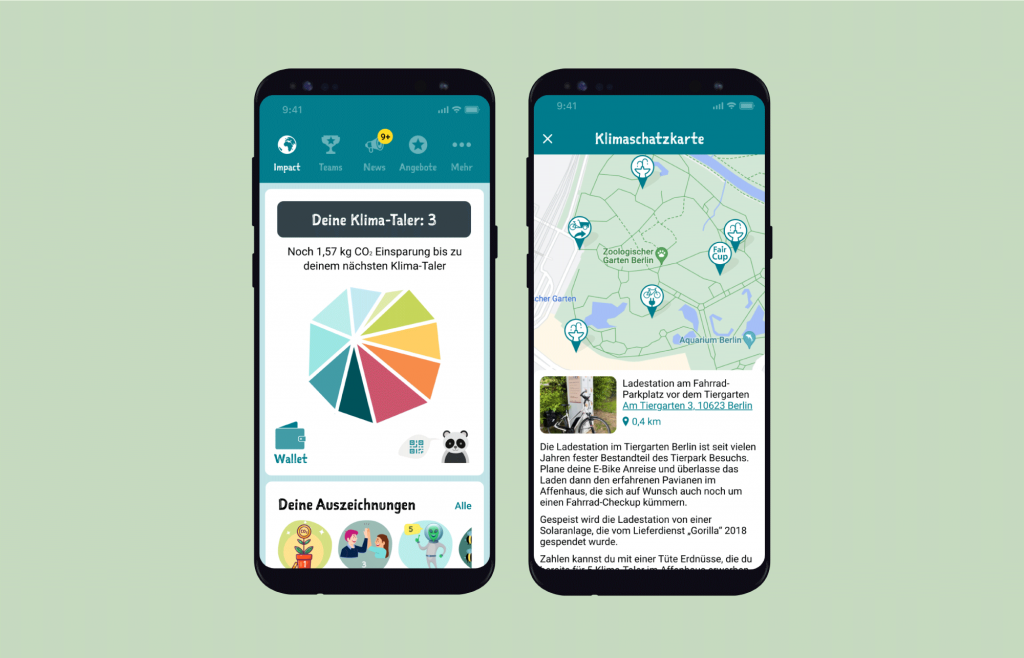
Participation in the Klima-Taler network motivates various stakeholder groups within your city community.
Data analysis makes goals measurable
To ensure that the set goals are achieved, monitoring must be implemented. This means that the goals need to be measurable and data analysis must take place. The Klima-Taler app enables detailed analysis of mobility and energy consumption data at the municipal level without disclosing any personal information. Based on this data, cities can plan, monitor, and adjust their sustainable urban development measures as needed. At the same time, the transparent presentation of data increases citizen participation and motivation to actively contribute to a sustainable city.
Utilize Funding Opportunities
To finance sustainable urban development in the long term, municipalities can draw on a variety of climate proctection funds from the EU, federal government, and states. Funding supports not only specific projects such as building renovations, greening initiatives, or energy efficiency measures, but also the development of strategies and the personnel needed for planning and implementation.
Examples of Successful Sustainable Urban Development
Cities worldwide are using digital technologies in urban planning to improve the quality of life for their citizens. With innovative solutions, they are setting new standards in urban development.
Freiburg a Particularly Sustainable City
Freiburg is considered one of the leading sutainable cities in Germany. The focus here is on environmentally friendly mobility, energy-efficient construction, and citizen participation. Particularly well-known are the newly developed districts of Vauban and Rieselfeld, which have gained international attention for their passive house standards, short distances, and high quality of life. Through targeted traffic planning, the share of cycling and walking has been significantly increased, while car traffic has decreased. Sustainability is also firmly embedded in Freiburg’s administration, for example through a dedicated unit for sustainability management. Freiburg demonstrates how a large city can combine ecological, social, and economic goals through long-term planning.
Bad Berleburg Excels with Cost-Efficient Planning
Bad Berleburg in southern Westphalia demonstrates that smaller cities can also implement sustainability strategically and successfully. The municipality follows a comprehensive concept that equally strengthens the environment, economy, and social cohesion. Bad Berleburg places particular emphasis on citizen participation and transparency in urban development. Projects focused on energy efficiency, revitalization of the town center, and promotion of regional economic cycles have reduced CO₂ emissions and improved quality of life. The city shows that smart planning and cooperation are often more important than large budgets. In this way, Bad Berleburg serves as a model for how sustainable development can succeed even in rural areas.
The Small Town of Nidderau Successfully Uses the Klima-Taler App
Since 2023, the town of Nidderau in Hesse has been using the Klima-Taler app to actively involve citizens in climate protection. The app rewards environmentally friendly activities, such as cycling, walking, or saving energy, with digital Klima-Talers. These can be redeemed at local shops, clubs, or municipal facilities, linking sustainability with support for the local economy. Through the project, many residents of Nidderau have quickly been motivated to adopt climate-friendly behaviors, resulting in measurable CO2 savings. At the same time, the initiative raises awareness of sustainable practices and revitalizes the town center.
Concepts and Practices of Sustainable Cities at a Glance
Sustainable urban development integrates ecological, economic, and social aspects by using renewable resources, minimizing waste, and promoting livable communities that foster equality and inclusion. Key instruments include decarbonization strategies, sustainable infrastructure, climate-friendly mobility, and digital tools such as the Klima-Taler app, which actively engages citizens and makes measures measurable. Practical examples from cities like Freiburg, Bad Berleburg, and Nidderau demonstrate how sustainable development can be implemented concretely through long-term planning, citizen participation, and innovative concepts. This shows that sustainable urban development is feasible for both large metropolitan areas and smaller towns and municipalities.
If you have any questions about how to advance sustainable urban development with the Klima-Taler app, please contact:

Markus Schulz
markus@klima-taler.com

